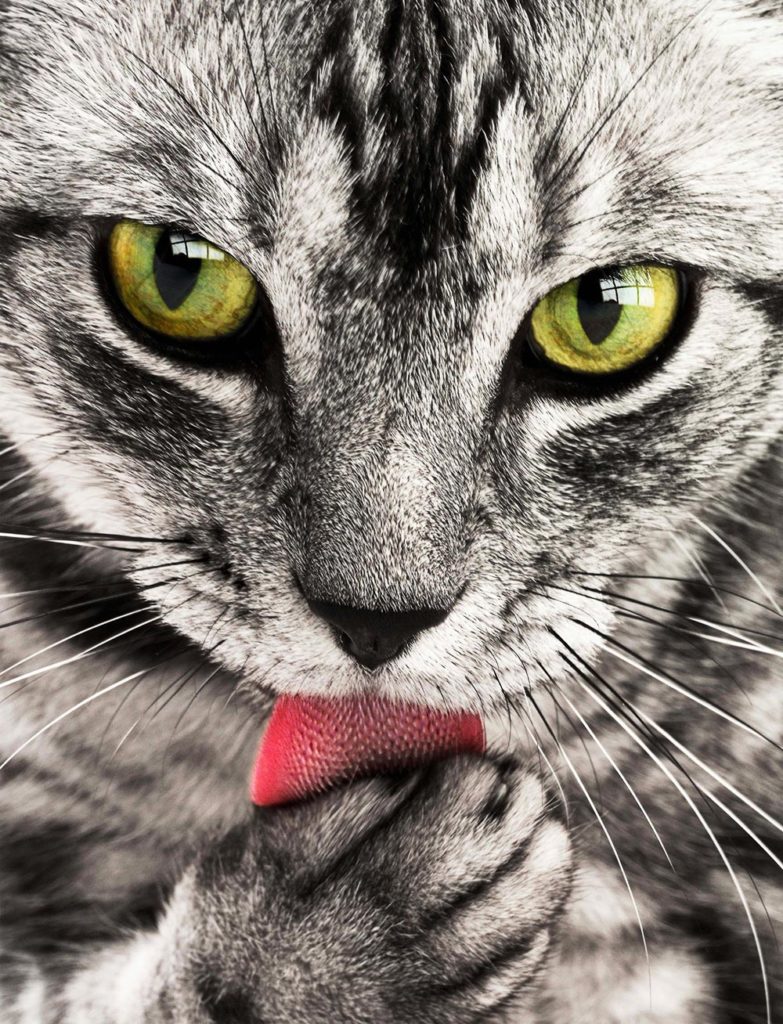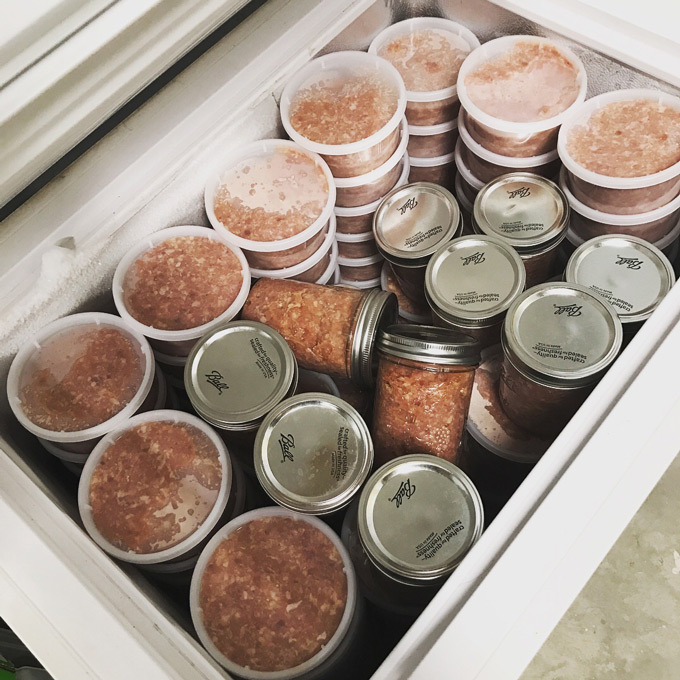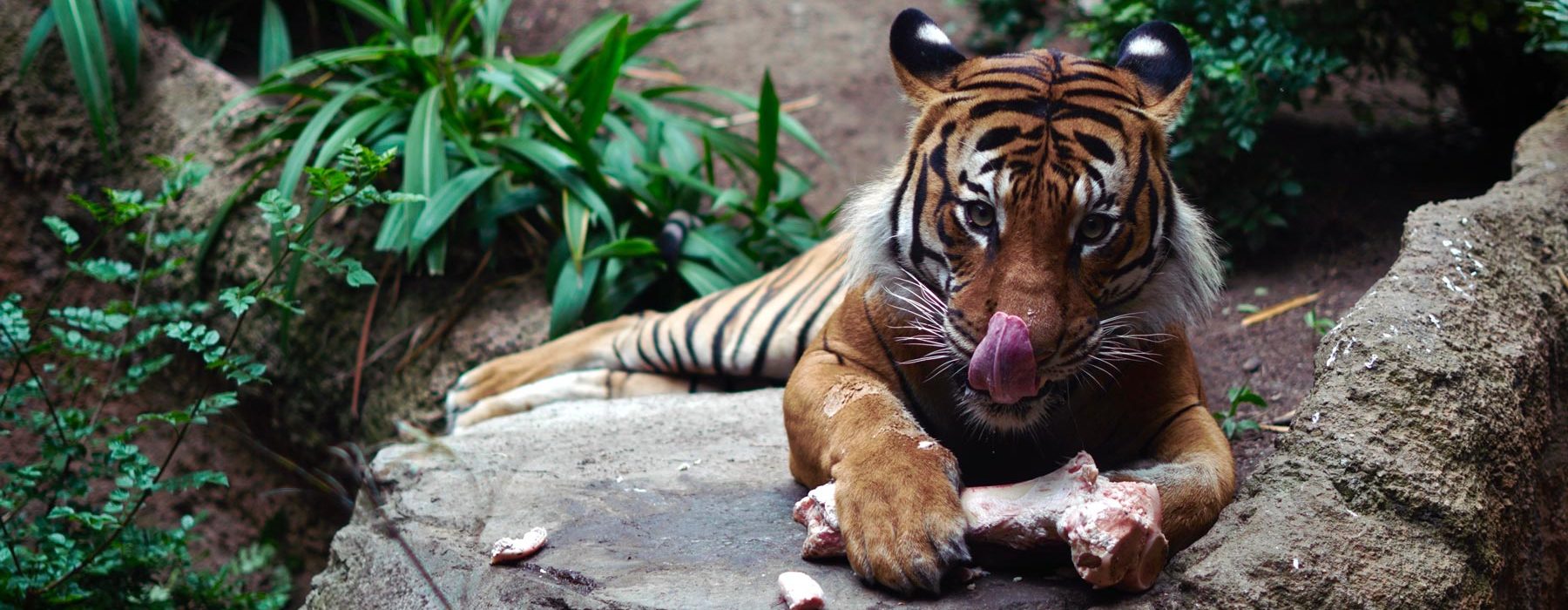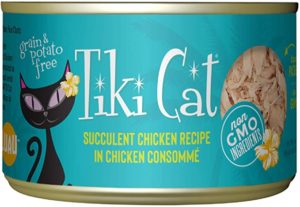What’s the best cat food for Bengals?
To understand what a healthy diet looks like for your Bengal cat, you need to understand what a healthy diet for ANY cat looks like. All cats have the same nutritional needs: they are obligate carnivores, meaning they must have meat to survive and cannot get nutrition from plants. The healthiest food to feed your cat is a balanced meat diet.

All cats are carnivores, and their natural diet is raw meat.
It doesn’t matter if the cat is large or small, wild, feral, or domesticated. Our domestication of cats has not changed the fact that they are obligate carnivores. In fact, we domesticated them primarily for the purpose of hunting pests. All cats MUST eat meat in order to survive, and they don’t get nutrition from plant matter. Meat and the nutrients found only in meat are essential for their survival.
Isn’t raw meat full of bacteria that could make a cat sick?
A cat’s digestive system is specialized to handle raw meat. It has shorter segments than a human’s digestive system since a cat’s diet of protein and fat are highly digestible. A short digestive tract also allows cats to process food very quickly. Food transit time is 12-16 hours vs. 35-55 hours in a human!
Does the feral cat catching mice in your backyard first cook the mouse over a fire before consuming it? Nope! He eats it raw, and a Bengal cat is no different.
Not to mention, dry food that sits on shelves for months or even years is much more likely to be laden with harmful bacteria than a fresh cut of raw meat!
Would a strictly meat diet mean my cat misses out on nutritional fruits and veggies?
Cats are not humans, and do not require any fruits or veggies. The reason you see fruits and veggies on pet food bags is because they’re cheaper than meat, and they look healthy to humans, who are the ones making the purchase! A carnivore’s digestive system isn’t designed to process food exactly like a vegetarian’s.
In fact, cats’ bodies are not capable of turning plant matter into usable energy. For example, cats require arachidonic acid, which is only found in meat. Cats also cannot make Vitamin A from plants, they must receive it from other animals (meat). And cats require taurine, which is present in meat but not plants.
Why does my cat like to nibble on grass?
The occasional nibble of grass provides added fiber and enzymes to help a cat’s little digestive system stay at peak performance.
Your sweet little kitty is a meat eating predator
Yes, cats are adorable, we share our lives and homes with them, and the word predator sounds a little extreme. But the facts can’t be ignored:
- A cat’s entire makeup is that of a predator. Hunting is their favorite activity. Their senses are designed to track prey, they have excellent night vision, retractible claws, extreme power for their size, teeth that are shaped for the tearing of flesh, and barbed tongues for getting every last scrap of meat off bones.
- A cat’s digestive system is specialized to handle raw meat, as we reviewed above.
- A cat burns protein for energy. Unlike omnivores (like humans), cats constantly burn protein for energy. Omnivores will only burn protein when its plentiful in their diet. If a cat doesn’t have enough protein, it will be forced to deconstruct its own body’s proteins for energy to live. Death from protein starvation can be very rapid in cats.
How can I meet my Bengal’s need for a meat-based diet?
When you’re looking for healthy foods for yourself, what do you shop for? Probably not the aisles filled with processed, packaged snacks! Similarly, the freshest food for cats doesn’t come in a bag that sits on the shelf at room temperature.
Below are some options for a Bengal cat diet, from best to worst.
If you’re thinking, “But I can hardly afford to buy healthy food for myself!”, just pick an option that you can reasonably afford.
Best: Nutritionally balanced raw meat homemade diet
Two great things about making your own cat food at home: you have total control over the ingredients, and it’s very affordable compared to canned food or pre-made raw food (for reference, pre-made raw food is about $10/lb. and you can make your own for $2/lb.). It just takes a lot more time!

The key to this diet is balanced. For starters, this means homemade raw food should have the correct ratio of muscle meat to bone and organs, have an appropriate fat/protein/carb ratio, and have plenty of taurine, which is found in hard working muscle meats. Feeding your cat chicken breast alone would not be a balanced diet.
Most vets won’t supports homemade raw diets, since they’ve likely seen the consequences of a poorly balanced diet. Feeding an unbalanced diet can cause fatal health problems. You need to take the time to learn properly and know what you’re doing. But once you learn, it’s not a lot of work and is a fantastic option for feeding your cats.
Why raw meat vs. cooked? Cats can handle raw food just fine, as we emphasized earlier. Cooking the meat destroys some enzymes and nutrients, so it’s ideal to feed raw, which is what a cat would normally eat without his human servants around to serve him. If you need to cook the meat for your own comfort level or because your pet seems to prefer it, that would be your second best food option.
Bones, however, should never be cooked, as they become hard and brittle. Uncooked bone is soft and easily digestible for a cat.
Great: Commercial balanced raw diet
These are usually found in the freezer section of your small local pet shop. Stop in, make a note of what options they have, what the prices are, and then go home and do a little investigating of the ingredients. You want to have a good understanding of the ingredients. They should be labeled as a complete diet, not just a supplemental treat. You can also buy pre-made raw food online and have it shipped to you from companies like Darwin’s.
Buying pre-made raw food takes some of the pressure off you to make your own food. Although it is convenient, you will pay for it in price. This is the most expensive feeding option.
Very Good: Dehydrated Raw or Commercial Cooked Foods
Dehydrated raw food is less fresh than frozen raw and just as expensive, but it’s a convenient alternative. It’s shelf stable—you just have to add water.
You’ll find commercial cooked foods in the refrigerated section of pet food stores. You’ll want to keep a close eye on the ingredients, as these are more likely to contain a high percentage of veggies (i.e. cheap filler).
Both of these options are OK because they’re not highly processed.
Good: Canned food
If you don’t want to make raw food, and pre-made isn’t in your budget, you’ll want to go with canned food. There’s a wide range of quality with canned food. Any canned food is going to be better than dry food because of the moisture content, and the protein sources are more likely to be meat-based, but you’ll want to research your options.
In the resources at the bottom of this article, you’ll find a link to an extensive chart that compares different canned foods. From that extensive list, here’s our top picks for canned food:
#1: Tiki Cat – best for ingredient quality and nutritional balance
A high quality canned food that all of our cats LOVE is Tiki Cat Chicken Consomme. If you’re not keen on the raw food options above, this is a great choice.
#2: Weruva BFF – great for a variety of flavors
We prefer Tiki Cat is the healthiest option, but if your kitty loves gravy, he will love Weruva! They use premium quality ingredients as well.
#3: Purina Fancy Feast – best budget choice
While the quality of ingredients may not be premium, the nutritional balance of this food is really good! This is a great canned food if you’re on a budget.
Wondering when and how much to feed?
Check out our feeding tips here.
What foods to AVOID at all cost
Unbalanced diets
This is the worst thing you can do for your Bengal. Deficiencies can cause bone degeneration and organ failure… significant, irreversible and even fatal health problems.
Semi-moist food pouches
These pouches contain a preservative called propylene glycol, which is similar to antifreeze— not good for animals to consume!
Dry food
Kibble. It’s not fresh. It’s heavily processed, which can alter and destroy nutrients. It sits in cupboards for weeks or months before it’s consumed, where it can easily become rancid. It was created for the sole purpose of being cheap and convenient. The primary problems are these:
1. Dry food has too many carbs, and not enough protein.
In dry food, there are too many carbs and not enough protein, or the wrong kind of proteins (plant-based instead of animal-based). Cats cannot metabolize the proteins of fruits or vegetables the way that humans or dogs can. But since plant-based protein is cheaper than animal protein, pet food companies will pack plants into the food and attempt to supplement the food artificially. Pet owners have caught onto the fact that they shouldn’t be feeding their cats grains, and look for “grain-free” food, but many companies have responded by using potatoes, peas and other vegetables instead. These are not only the wrong kind of proteins, but they are high in carbohydrates. In the wild, only 1-2% of the cat’s diet consist of carbohydrates. Dry food is typically 35-50% carbohydrates or more. Even the most expensive dry foods on the market have 20%+ carbs so that they can be shelf stable. Cats have no dietary need for carbohydrates. This kind of diet is unnatural and detrimental to their health.
2. Dry food does not have enough moisture.
Water contained in food is absolutely essential to a cat’s diet because they do not have a strong thirst drive. Nature intends that their moisture comes from their prey, which is 70-75% water. Dry food is 5-10% water. A strictly dry diet will result in chronic dehydration. A cat that eats dry food and drinks from a water bowl still only consumes about half the amount of water as a cat on a wet food diet. This can cause serious kidney and bladder issues.
Results you can see
Feeding a cat raw meat is the most sensible, natural option. And just as you’d expect with humans, there are noticeable differences when you start feeding your cat what he was designed to consume. You’ll notice a shiny, smooth coat. Less shedding. More energy. And a lot less smelly poo!
Before diving into making your own food, you’ll want to be FULLY prepared and educated, but don’t let fear keep you from that option. Once you’ve learned how, making your own cat food is easy. It’s not terribly enjoyable, but what IS enjoyable is seeing how much the fur-babies love it and thrive on it.
Dive into some research and you’ll learn the fundamentals, plus helpful tips and tricks in no time.
Ready for some reading?
Resources for further reading
- Facebook Group: Cat CRAP (Cats Completely Raw and Proud) – A great place to start with raw feeding (read the group files)
- Best to Worst Pet Foods by Dr. Karen Becker
- Feline-Nutrition.org
- CatInfo.org
- Canned Food Comparison Chart


